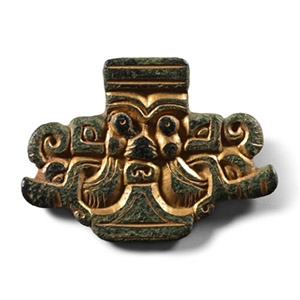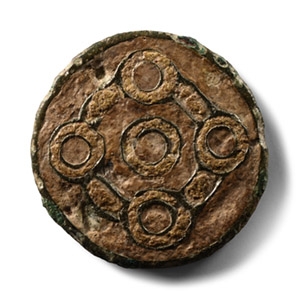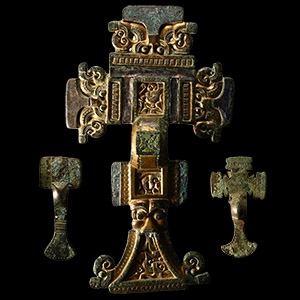Home > Auctions > 3 - 8 September 2024
Ancient Art, Antiquities, Natural History & Coins
Auction Highlights:
Acquired in Vienna, Austria, in 2001.
In Switzerland before 2005.
Property of a London gentleman.
Acquired in the mid 1980s-1990s.
Private collection, Switzerland, thence by descent.
Private collection, since the late 1990s.
From a collection acquired on the UK art market from various auction houses and collections mostly before 2000.
From an important Cambridgeshire estate; thence by descent.
From a collection acquired on the UK art market from various auction houses and collections mostly before 2000.
From an important Cambridgeshire estate; thence by descent.
Found North Norfolk, UK.
From an old private collection of Norfolk, UK, gentleman, formed since 1998.
Accompanied by a copy of UK Detector Finds Database (UKDFD) report no.57993.
See Menghin, W., Das Schwert im Frühen Mittelalter, Stuttgart, 1983, for discussion.
The decoration of this mount probably dates it to the 8th century which is very late for this type of artefact. The lack of a transverse bar to the underside suggests that this item may have been a cover or cap for a more functional form of boss.
Found UK.
From a North Yorkshire, UK, private collection.
Acquired from Adam Partridge Auctioneers, Macclesfield, UK.
Property of Mr A.B., an American collector.
Cf. MacGregor, A. & Bolick, E., A Summary Catalogue of the Anglo-Saxon Collections (Non-Ferrous Metals), Oxford, 1993, item 14.8, for type.
Found Norfolk, UK.
From an old private collection of Norfolk, UK, gentleman, formed since 1998.
Cf. Hines, J., Clasps-Hektespenner-Agraffen, Stockholm, 1993, p.74.
Gusset plates were attached to the lower sleeve of female dresses to ensure that the fabric did not tear when the cuff was opened.
Found Norfolk, UK.
From an old private collection of Norfolk, UK, gentleman, formed since 1998.
Cf. Pollington, S., Kerr, L. & Hammond, B., Wayland's Work: Anglo-Saxon Art, Myth & Material Culture from the 4th to 7th century, Ely, 2010, plate 13(b), for similar gilt-bronze panel.
Found near Kelling, Norfolk, UK.
From an old private collection of Norfolk, UK, gentleman, formed since 1998.
Accompanied by a copy of UK Detector Finds Database (UKDFD) report no.57992.
This lot has been checked against the Interpol Database of stolen works of art and is accompanied by a search certificate number no.12286-221758.
See Margeson, S., Ball-Headed Pins: A Typological Puzzle in East Anglian Studies: Essays Presented to J.C. Baringer on his Retirement August 30, 1995, Norwich, 1995.
Found Norfolk, UK.
From an old private collection of Norfolk, UK, gentleman, formed since 1998.
Cf. MacGregor, A. & Bolick, E., A Summary Catalogue of the Anglo-Saxon Collections (Non-Ferrous Metals), Oxford, 1993, item 12.36 for examples on the headplate of a brooch.
Found East Anglia, UK.
From an old private collection of Norfolk, UK, gentleman, formed since 1998.
Cf. MacGregor, A. & Bolick, E., A Summary Catalogue of the Anglo-Saxon Collections (Non-Ferrous Metals), Oxford, 1993, item 47.19, for type.
Found East Anglia, UK, early 1990s.
Accompanied by a written report compiled by Anglo-Saxon specialist Stephen Pollington.
This lot has been checked against the Interpol Database of stolen works of art and is accompanied by a search certificate number no.12287-221153.
Cf. MacGregor, A. & Bolick, E., A Summary Catalogue of the Anglo-Saxon Collections (Non-Ferrous Metals), Oxford, 1993, items 15.13, 15.45 (small-long brooches), and 12.36 (cruciform).
The group belongs to a standard assemblage in 6th century female graves, with two smaller brooches worn at the shoulders to support a peplos dress, and a larger and more ornamental brooch worn on the chest to close a shawl or mantle.
193 - 204 of 3369 LOTS

.jpg)

.jpg)
.jpg)
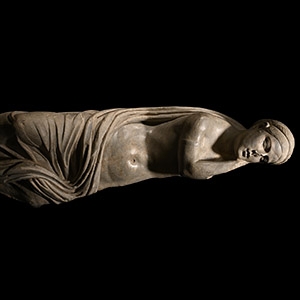
.jpg)
.jpg)

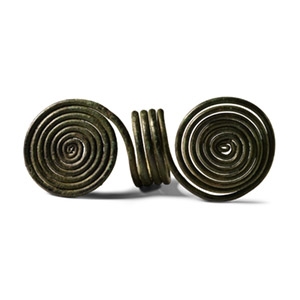
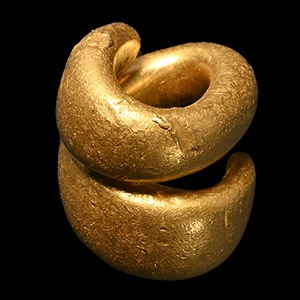
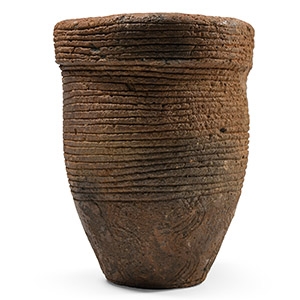
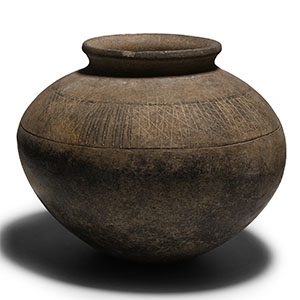

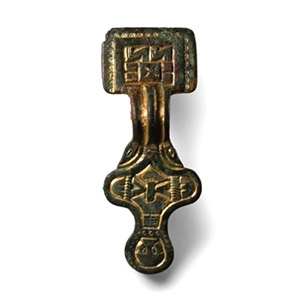
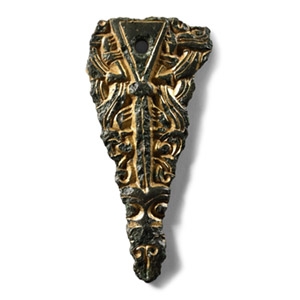

.jpg)
